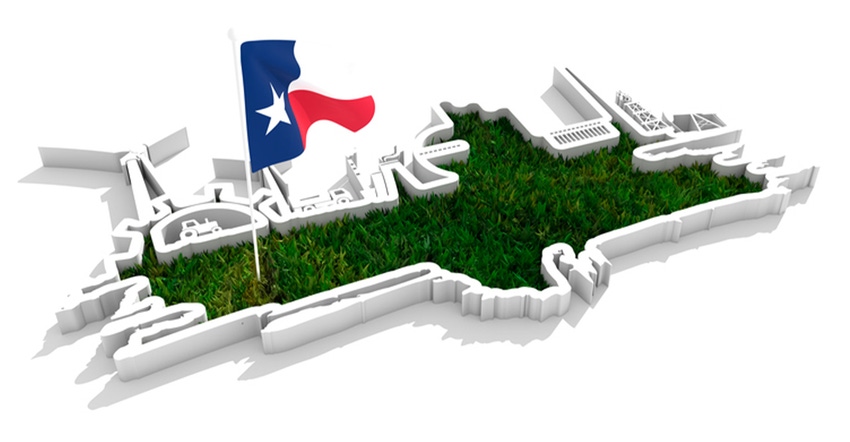
The EPA recently introduced its National Recycling Strategy to bolster recycling rates to 50% by 2030, but work already has commenced at the state and local level apart from federal guidance.
In Texas, a Recycling Market Development Plan (RMDP) prepared by Burns & McDonnell explores the feedstock available in both the public and private sectors as well as the opportunity cost and economic impact of recycling materials that are not currently being recycled.
"This RMDP provides value to a range of stakeholders within Texas and outside of the state; including organizations tasked with recycling market development in Texas, businesses seeking recycling-related data and opportunity in the state, and entities developing recycling market development strategies in other states or regions," the report states.
The report details tonnages material and commodity-specific market conditions, barriers, opportunities and strategies in an effort to boost use of state-generated recycled material feedstocks. Recommendations based on the findings are describe the "institutional, financial, administrative, and physical methods, means, and processes that could be used." The RMDP builds on prior studies that were completed including the 2017 Study on the Economic Impacts of Recycling (SEIR).
A survey conducted for the study discovered 12.9 million tons of recycled Texas MSW material in 2019 at an estimated gross value of $821 million, a 3.7 million ton increase from a similar 2015 study. Materials accounted for included paper, plastics, metal and glass as well as organics and C&D waste. Sources from the agriculture and industrial sectors also were considered but counted separately from MSW. The report showed a total of 6.9 million tons of state-generated materials from industrial recycling, valued at $1.4 billion in 2019. The formula used to calculate the data was Total Recycled / (Total Recycled + Total Disposed) = Percent Recycling Rate.
A two-pronged approach was used to develop the set of strategies used in the RMDP. General and cross-material strategies demonstrate how stakeholders could expand market capacity and establish tools and resources. Material-specific recommendations " seek to capitalize on opportunities benefitting individual priority materials."
Stakeholder roles also are explored through the document from state agencies, Texas universities, regional Councils of Governments (COGs) and local governments to out-of-state and other entities.
"These roles are based on the selection of appropriate tools and mechanisms for each entity, consideration of agencies’ respective missions, programs and activities, and past and current roles in recycling market development," the report states. "In addition to selecting appropriate tools and mechanisms, it is also important to ensure that efforts to strengthen recycling market development are managed properly."
The RMDP provides six recommendations for recycling market development, including establishing a nonprofit Texas Recycling Market Development Center (TxRMDC) located at a university. In addition, the development of a Recycling Market Development Board would drive multi-organizational efforts and guidance for the newly-established center.
A focus on private sector engagement would target the recovery of "scarce" resources and realistic solutions. According to the report, "this could be achieved by having a balance of industry representatives on the recycling market development board in addition to collaborating/partnering directly with some of the many organizations," outlined throughout the document.
The nonprofit would initially comprise of two full-time staff members, but the strategic location at a Texas university would allow the center to leverage personnel and organizational resources including student interns to meet goal projections.
A key part of the recommendations involves improving recycling market intelligence through the Comptroller’s Statewide Procurement Division in order to provide recycled-content tracking consistency across state agencies, especially for materials purchased/used in Texas. Finally, the RMDP supports gathering information from Texas processors and manufacturers to determine if there has been growth in the quantity of recovered material processed/consumed in the state, "their perspectives regarding whether barriers to using recovered materials are being adequately addressed; and whether resources should be redirected to better fit the needs of state businesses."
"Funding is a key consideration in the implementation of recycling market development strategies, as strengthening markets for recovered materials in Texas will require investing in infrastructure, education and outreach, innovation, and more," the report states. "The potential economic and environmental benefits that can be gained by this investment are substantial and serve to benefit all Texans as time progresses."
About the Author(s)
You May Also Like




